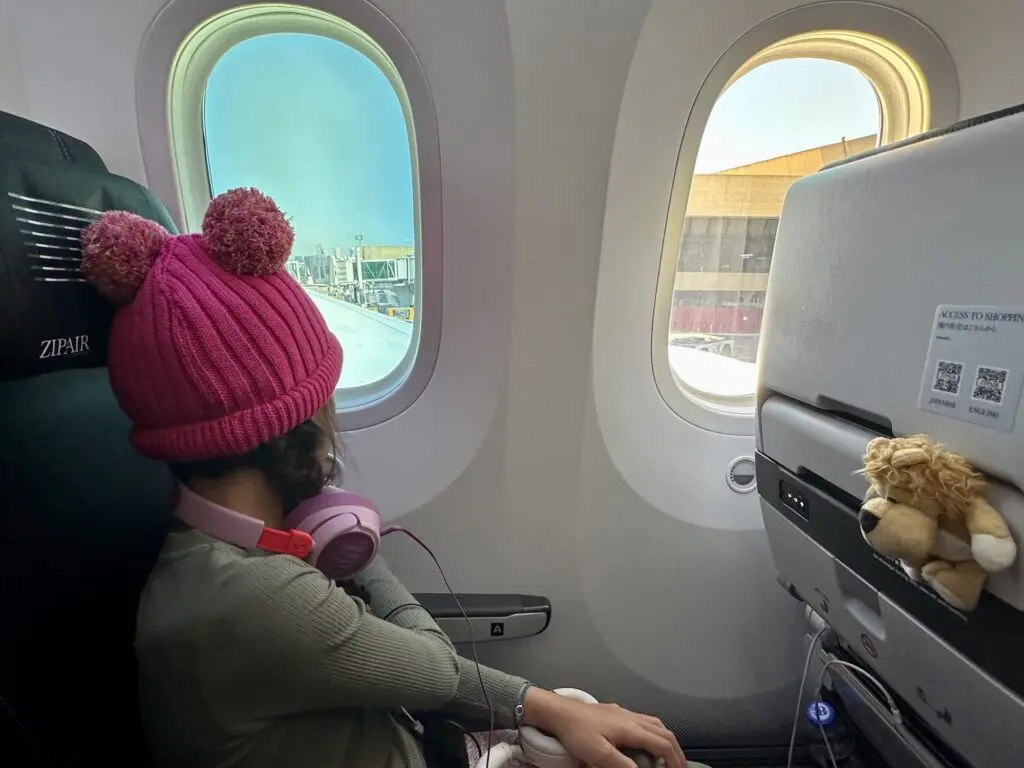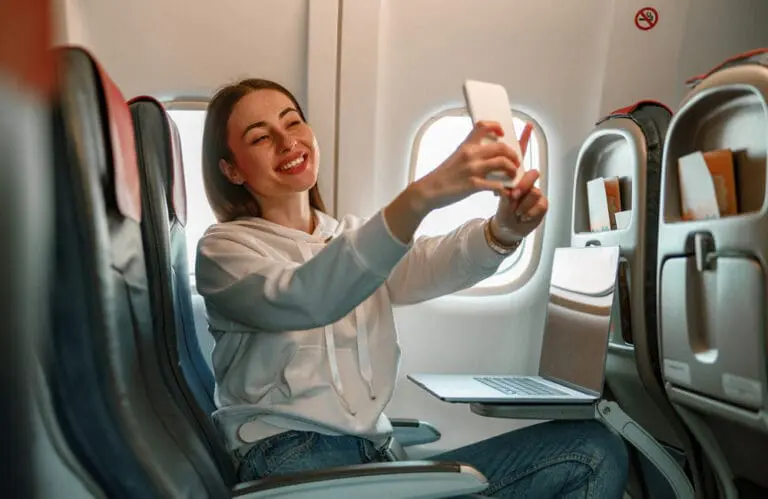ZIPAIR may not fly Down Under, but given the number of Japan-bound travellers there are, it’s plausible that a fair few Aussies will one day find themselves aboard a ZIPAIR flight, en route to the carrier’s Tokyo Narita hub. Considering that the airline also flies long-haul to six North American ports, as well as several Asian destinations, it’s entirely possible that one day, the airline could find its way to Australia. Karryon’s MARK HARADA (and his family) try out the service aboard Japan’s newest international airline, ZIPAIR, on a flight from Manila to Tokyo.
Details
- Route: Manila – Tokyo Narita
- Flight number: ZG096
- Frequency: Daily
- Aircraft: B787-8 Dreamliner
- Class: Economy
- Configuration: 3-3-3
- Seat: 26C (Aisle)
- Loyalty: ZIPAIR Point Club
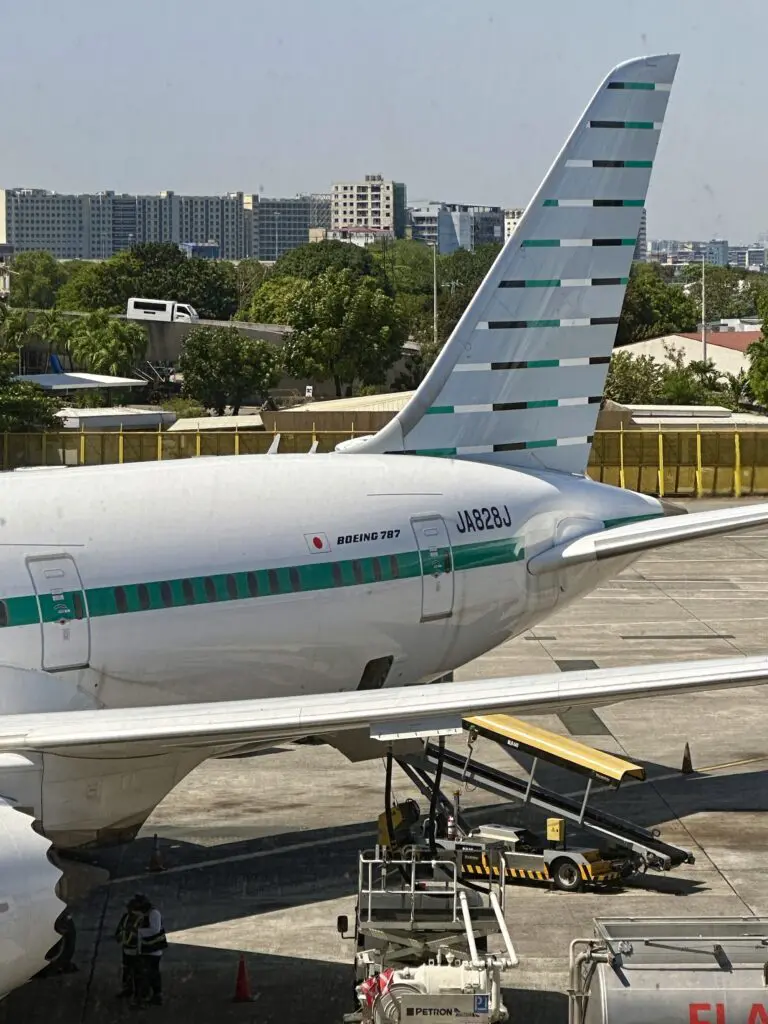
Check-in & boarding
We arrive at Manila Airport’s Terminal 1 nearly four hours before our flight (recommended when travelling ex-T1), but there’s already a line forming next to a ZIPAIR pull-up banner… in the middle of the departures hall ( a quirk of MNL, not of the carrier). After a short-ish wait, the queue is transferred to the ZIPAIR counters, where check-in goes smoothly.
While online check-in isn’t available for this service, it is available on the return NRT-MNL leg. And if you’re flying out of Narita with the Japanese low-cost carrier, there are also self-check-in kiosks with bag drop stations.
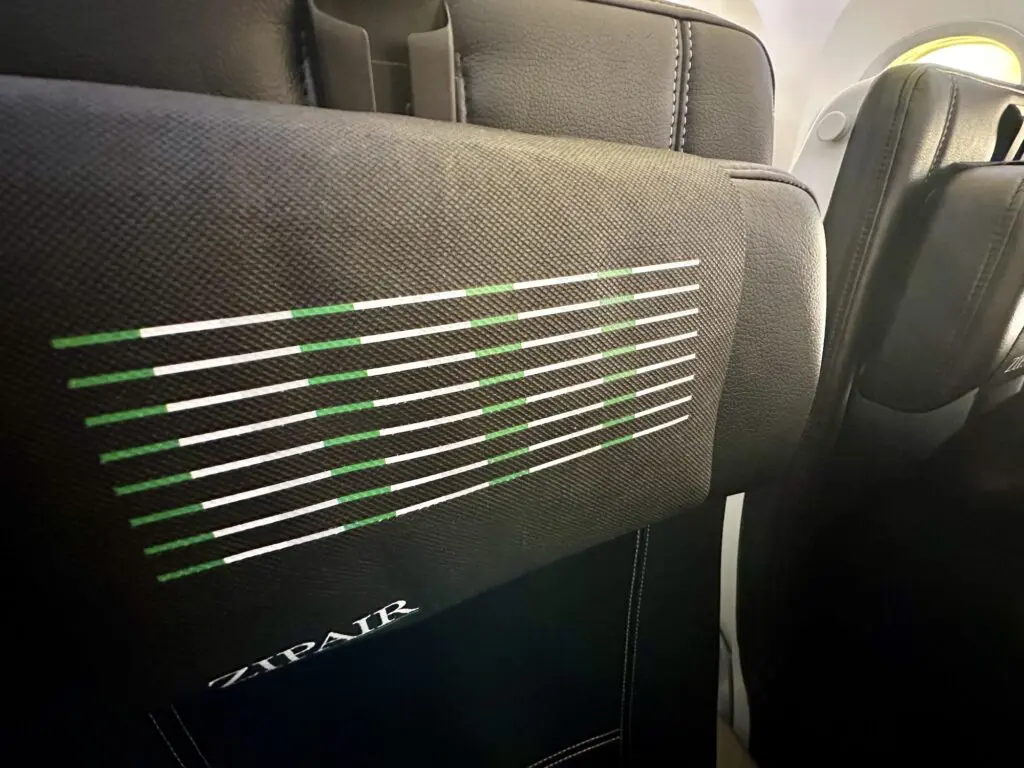
Luggage allowance
Flyers can pre-purchase checked baggage (the cost of which varies per route, but on this flight is US$46 per piece), with a maximum of 30kgs per bag (up to five pieces). Passengers can also carry the usual two cabin bags, with a total weight of less than 7kgs.
Cabin & comfort
The first thing I notice as I board the 787 is the no-frills cabin, in which rows of plain black seats contrast against the white fuselage. Airline branding is also minimal.
On most flights of this distance (around 3.5 hours), you’re likely to fly single-aisle. But one of the advantages of flying ZIPAIR is that every plane is a widebody – B787s to be precise. So that’s already a big tick.
A subsidiary of Japan Airlines, ZIPAIR launched in 2020 as a cargo airline (due to COVID) before commencing passenger services later that year. As such, the plane feels almost brand new, which is another big plus.
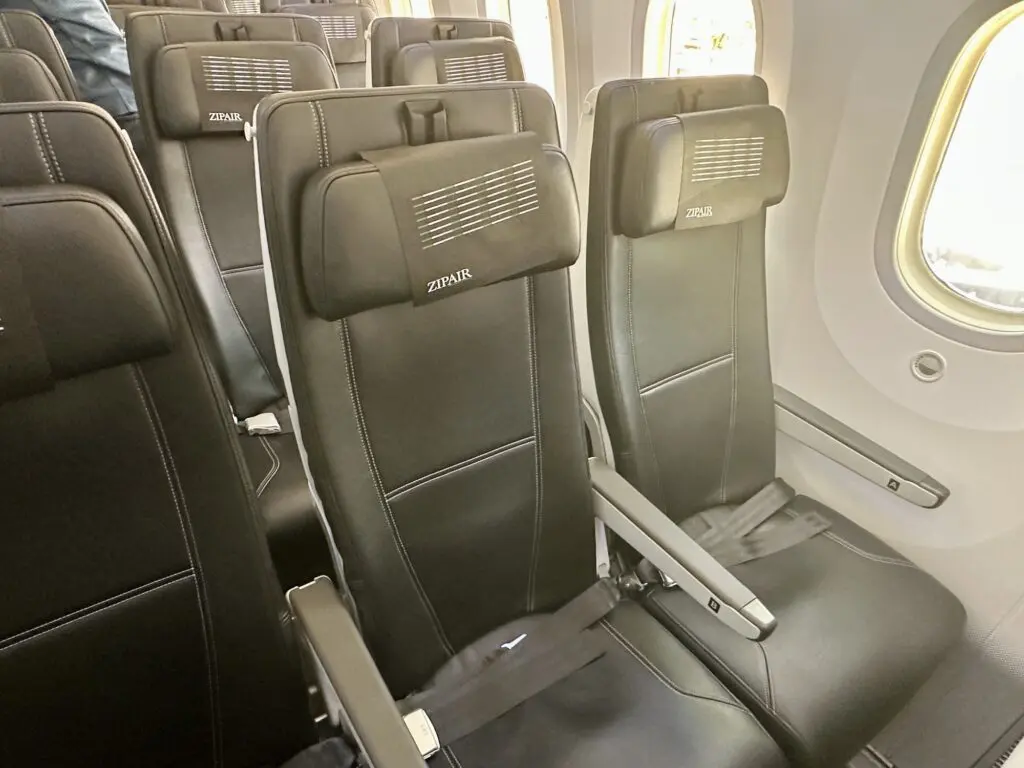
As is becoming increasingly common on LCCs, ZIPAIR’s seats are thinner – in depth – than traditional plane seats, which makes them appear flimsy, but they don’t feel that way. The seat pitch and width are a decent 79cms (31 inches) 43cms (17 inches) respectively.
With adjustable headrests, a partial recline that I try out (given there’s no one behind me) and just enough legroom for my six-foot frame, the all-leather seat offers a pretty cosy ride.
For those who want the assurance of an even comfier trip, ZIPAIR allows passengers to pre-pay for exit/front-row seats (US$37 for this route), front area aisle/window seats (US$14) and even back area aisle/window seats (US$12). There are also inflight seat changes available (for a fee).
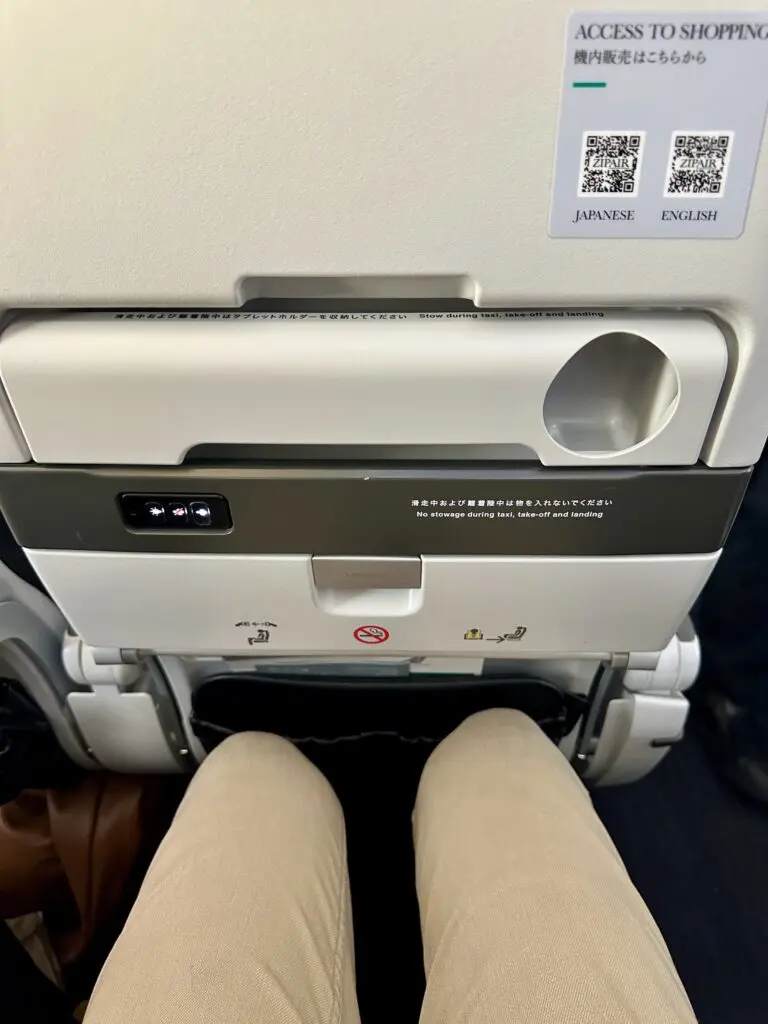
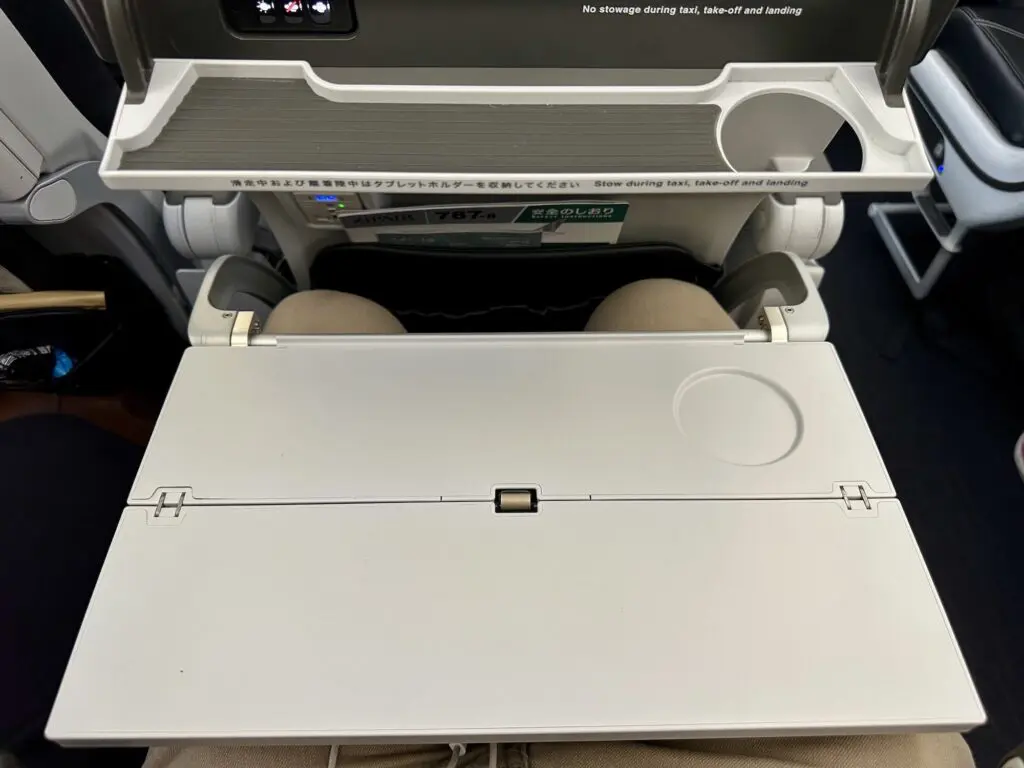
Just above my tray table is a smaller fold-out tray (with a drink holder) in which flyers can place their phones, tablets or other devices at eye level. Great for hands-free viewing, it’s a useful feature – and one that my 9-year-old daughter makes quick use of.
I’m also impressed by the charging port below each tray table, which includes a universal AC plug and USB port – and being new, they both work!
The Dreamliner’s windows, the largest of any aircraft, also feature five adjustable tints, including shades of yellow and blue as well as a natural setting.
At the pointy end of the plane, ZIPAIR offers a premium seating option called ZIP Full-Flat. One to try for next time. Or if you’re feeling impulsive, the LCC offers a seat upgrade service available only after takeoff. Between Manila and Tokyo, these go for 20,000 yen (a reasonable AU$210 one-way).
Entertainment
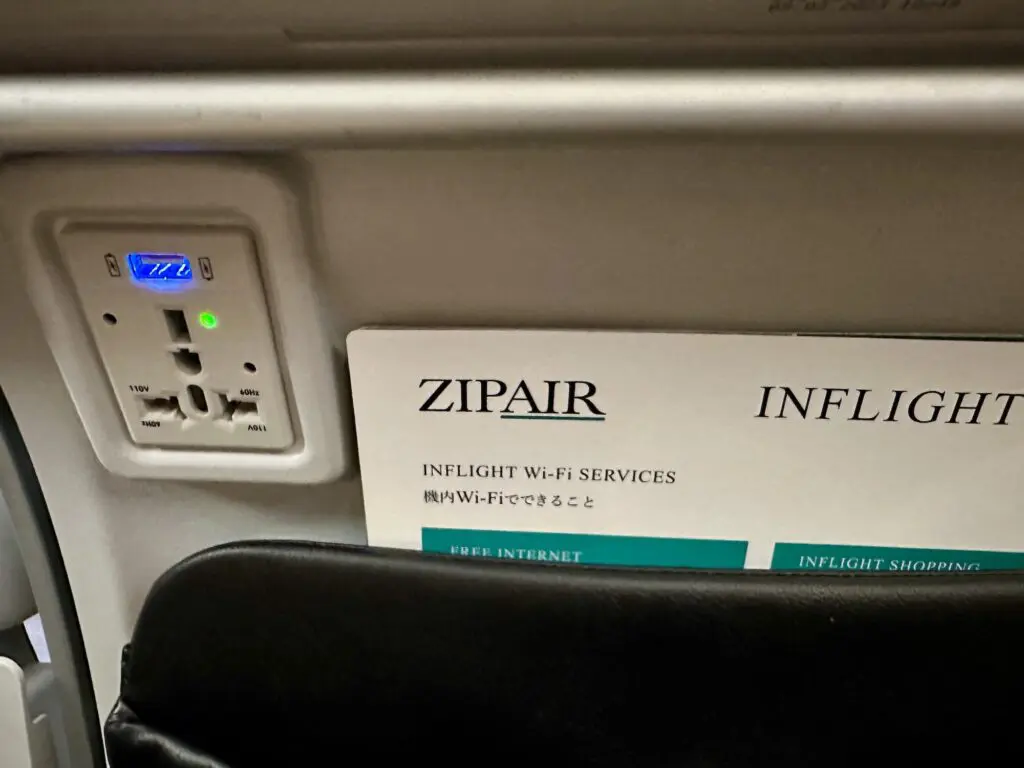
Shortly into our journey, we’re told the inflight entertainment system – comprising movies, music and inflight maps – isn’t working on this service due to “technical issues”, but there’s still free unlimited wifi, which I take advantage of. Access is easy, and the internet speed is good for emails and surfing.
There’s also a QR code for shopping for airline merch and F&B, but we’re told this isn’t working either.
Food & service
If you want to order a meal, you need to do so at least 96 hours (yes, four days!) in advance on this route. But not many do for this flight – perhaps due to its short duration.
However, the dining selection does look good, albeit on the pricey side.
Meal options range from soba noodles (around $18) and ‘ZIP original curry rice’ ($20) to the ‘ZIP original Wagyu beef curry rice’ ($33). There’s also a vegan teriyaki burger ($20) and even a super-cute children’s inflight meal box ($14).
You can also purchase snacks and drinks onboard, but only through your own device.
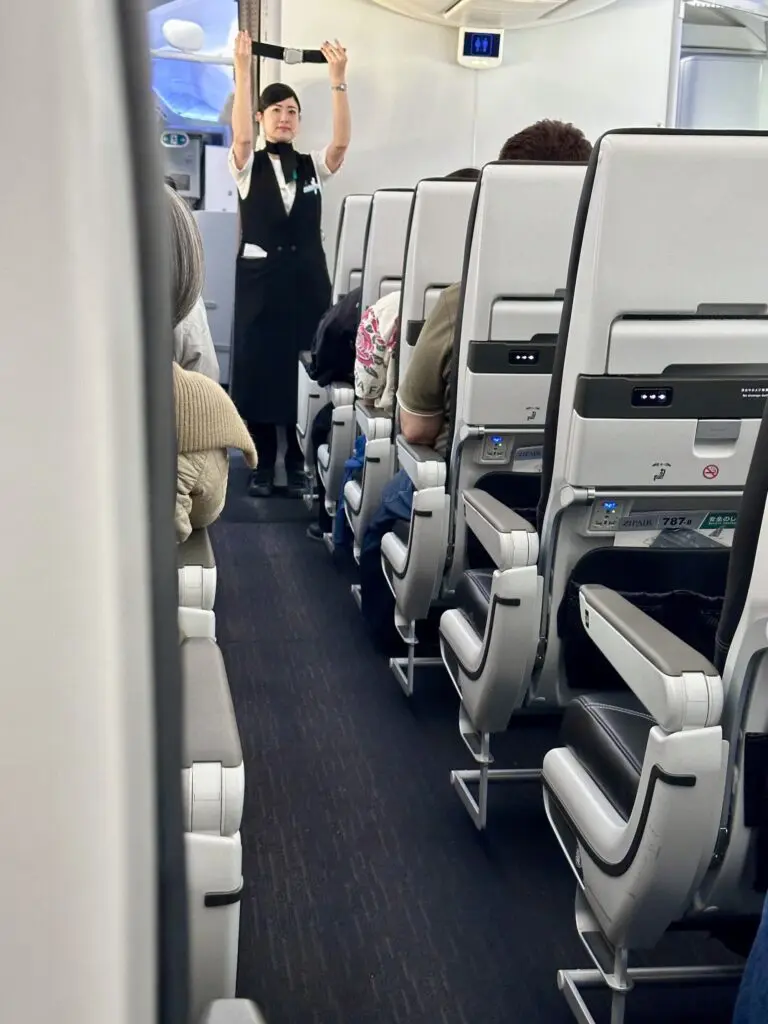
The cabin crew, in typical Japanese style, are polite and professional. Though without a meal service and only dining on demand, their jobs tend to revolve more around safety than service per se – on numerous occasions, crew walk past with a mini tablet, reminding passengers to keep their seatbelts fastened; they return later to warn flyers on the tablets that we’re “expecting turbulence, please fasten your seatbelt”.
To their credit, they do their jobs with diligence, walking down the aisles regularly, which is more than you can say for some flights.
We even get an apology for taking off late, even though we’re just 10 minutes behind schedule. That’s the perfect preparation for Japan.
The writer fully paid for this flight. All photos by Mark Harada (except top image).
For more information on ZIPAIR, visit www.zipair.net/en.
